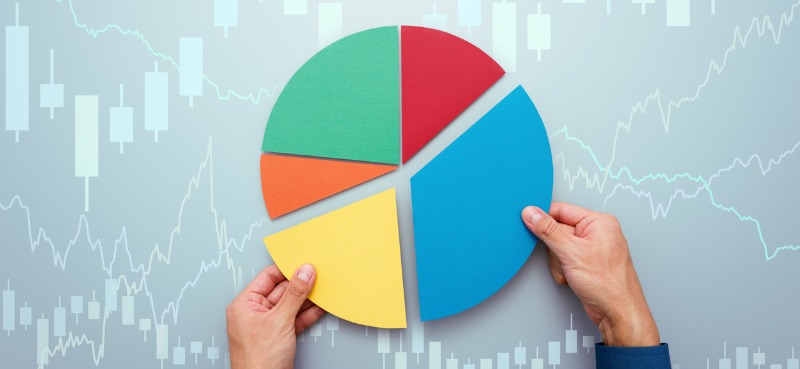Happy New Year!
As we venture into 2025, you might be wondering what’s in store for the market.
While there’s no crystal ball to tell us exactly what major market-shifting moments will take place over the next year, several key trends are already beginning to emerge, which can help guide our expectations for 2025.
Today, we’ll highlight three predictions we expect to shape the investment landscape this year and beyond.
Let’s dive in…
1. January will be a volatile month for the markets
The first month of the year will likely bring with it some major market fluctuations due to a number of factors, including:
Debt ceiling debates and fiscal policies: The U.S. government’s fiscal strategies, including potential spending cuts, may weigh on GDP growth and corporate earnings.
Meanwhile, as the Federal Reserve continues its balancing act of controlling inflation and supporting economic growth, any changes in monetary policy could trigger major market volatility.
Geopolitical uncertainty: Ongoing geopolitical risks, including tensions in Eastern Europe, Asia, and the Middle East, add more uncertainty to the markets. Any major geopolitical event or escalation in early 2025 could exacerbate volatility, particularly in global markets.
Earnings season: January marks the beginning of earnings season, with companies reporting their fourth quarter results. Any earnings surprises—whether positive or negative—could lead to sharp market reactions.
Tax-loss selling hangover: The residual effects of tax-loss harvesting at the end of 2024 could create pressure on certain sectors early in the new year.
Investors should brace themselves for heightened uncertainty as these forces converge. But remember: While volatility can be unsettling, it also presents opportunities to capitalize on the fluctuations.
2. Tokenization will take off and disrupt multiple sectors
Tokenization—the process of converting physical assets into digital tokens on a blockchain—has already begun making waves across various industries…
But 2025 is poised to be the year when it truly disrupts traditional systems as the Trump Administration defines the regulatory framework around cryptos.
Several sectors will feel the impact of tokenization:
Real estate: Traditionally, real estate has been an illiquid asset class, making it difficult for small investors to participate. Tokenization allows fractional ownership, enabling investors to purchase a portion of a high-value property. As tokenization sees greater adoption, it will lower the barrier to entry for real estate investors and facilitate quicker transactions with greater transparency.
Plus, by leveraging blockchain technology, tokenization offers a way to bypass traditional banking hurdles, like high interest rates and slow loan processing. This means prospective homeowners could more easily secure mortgages with significantly lower interest rates.
Financial assets: Traditional assets like stocks, bonds, and even commodities will see greater liquidity through tokenized platforms. Investors will be able to trade fractionalized shares with ease, opening new opportunities in previously restricted markets.
Art and collectibles: The art world is notorious for its high-value and often inaccessible assets. By tokenizing artwork and collectibles, investors will gain access to a marketplace where high-value pieces can be bought and sold seamlessly. Tokenization also ensures authenticity, addressing long-standing issues of fraud in the art market.
Tokenization offers several benefits, including fractional ownership, enhanced liquidity, and streamlined transactions. Put simply, tokenization will transform the very foundation of asset ownership. Expect significant adoption in the coming years as new regulations add more clarity to the digital asset sector.
Unsure of how to get started investing in digital assets? In Crypto Intelligence, Frank does all the legwork for you.
3. Small-cap stocks will reward investors
Small-cap stocks often fly under the radar during economic uncertainty, but 2025 could mark their comeback. Here are a few reasons why:
Economic recovery and innovation: Large-cap stocks continue to face pressures from inflation, geopolitical tensions, and interest rate hikes. But small-cap stocks tend to be more nimble in adapting to changing economic conditions.
As the global economy rebounds and industries such as tech, healthcare, and green energy see accelerated growth, small companies at the forefront of innovation will see substantial returns.
Valuation gap: Small-cap stocks have historically traded at more attractive valuations compared to their larger counterparts. Plus, market corrections and year-end tax-loss selling in 2024 are likely to leave small caps undervalued, creating attractive entry points for investors.
M&A activity: Smaller companies are often targets for mergers and acquisitions (M&A). Many established firms are looking to acquire high-growth potential companies to stay competitive in their respective industries. M&A activity in the small-cap space could drive significant price appreciation, offering a windfall to early investors.
Put simply, small caps are in the perfect position to reward investors this year. For Frank’s favorite small-cap stocks, join Curzio Venture Opportunities.
Positioning for 2025
The coming year will offer a ton of opportunities to profit for those who stay ahead of the curve. Market volatility will likely create strategic buying opportunities… Tokenization is set to redefine industries… And small-cap stocks are gearing up for a resurgence.
By understanding and adapting to these trends, investors can position themselves for success.























